Simplified by Walter Sorochan dated 2008
Posted 2008; Updated October 2021.
Most consumers have little idea what nano technology is, much less that it has already vaulted from the laboratory to the grocery store, the cosmetic counter and the appliance department.
Okay, big deal! But why should we know about nano technology? Answer: because it is giving us products now and in the future that will revolutionize how we will live!
Nano will change the practice of medicine, how we do things and even how we think! So lets get ready for the future. Nano is here now and you may not even be aware of it.
So what is nano technology? For more information go to: nano technology. Scientists have found matter that is smaller than atoms and molecules. It is referred to as nano technology. Nanotechnology was originally defined in the 1970s as the science of manipulating atoms and single molecules. In the early 1980s, the invention of the scanning tunneling microscope, which could image and manipulate single atoms, made it possible to design nano scale machines from individual atoms and molecules.
But what is a nano? Nano is derived from the Greek word "nano," meaning dwarf, one nanometre = nm = is the equivalent of one billionth of a metre.
- To put the size of a single ‘nano’ into perspective:
- One atom equals 0.1 nms,
- one water molecule equals one nms,
- one red blood cell equals 10,000 nms
- one hair is equivalent to 100,000 nms.
The smallest cellular life forms, the bacteria of the genus Mycoplasma, are around 200 nm in length.
Probably the best way to understand just what nano means is to compare nano as a unit of measure or scale to the size of things we do understand. For example:
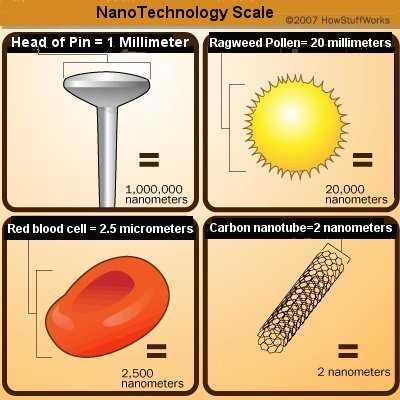
Nano matter comes from nano dust or powder. It is often referred to as smart dust because this dust acts as a sensor and hence, can be combined with other things to create many different products; even manipulated so it acts
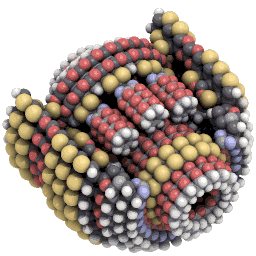 as a lively organism. [nano machine on right ] .
as a lively organism. [nano machine on right ] .
Scientists can create different nano products by how they combine the dust in presence of color, light, heat, pressure, sound and other environmental factors. For example, nano sheets are 100 times stronger than steel, yet only one-sixth the weight of steel. Smart nano can also transmit the information in the surroundings and maybe in the future it could be integrated in our body. Reference: Nanularity
Quantum Effects:
Matter has completely different behaviour at nano-scale level compared to matter at other levels. For example, it starts displaying quantum effects. That means completely different risks may be associated with it. The size question is not peripheral, it is central. Nano particles under 100 nano-metres wide -- less than the size of a virus -- have unique abilities. They can cross the body's natural barriers, entering into cells or through the liver into the bloodstream or even through the cell wall surrounding the brain. An example of this quantum behavior are silver nano-particles that are touted to enter the cell wall of viruses and disrupt their metabolic functions; including disrupting the DNA mutation of viruses. [ silver nano-particles do not affect other body cells or their processes. ]
All these new nano technology applications on the one hand are opening new horizons for mankind but on the other, are also initiating debate and controversy about their safety.
Here is a graphic illustration of how nano technology is created into into useful things.
Step 1 Powder: | Step 2 mftg: | Step 3 sheets: | Step 4 tubes: | applications: Available now e.g. |
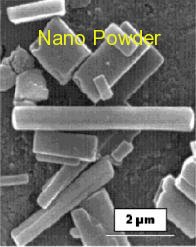 Nano Powder |
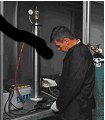 Machine |
 make sheets |
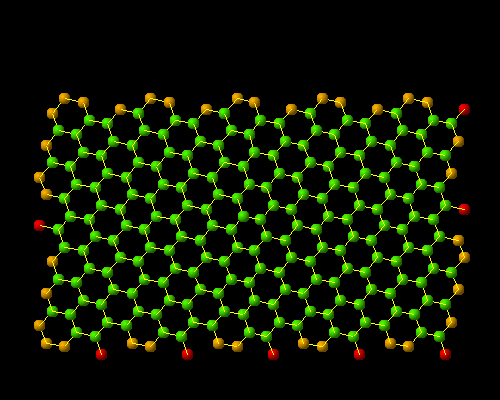 make tubes  |
 Memory chip  golf clubs  Band aids  paper  sun glasses |
Nano products have been produced for some time and gradually introduced without our awareness. As scientists get more expertise, there will be many futuristic applications; only a few are summarized at the bottom of this page.
Nano Predictions for the Future
| Nano converting sunlight into electricity. Solar panels, that would be 80 % efficient compared to 15 to 20 % efficient in 2008, would be available for home owners by 2010. | 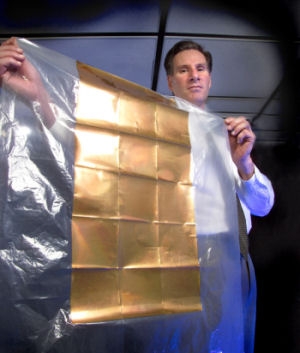
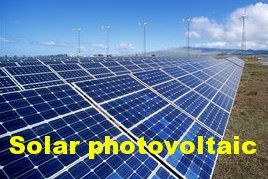
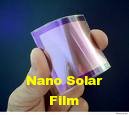 |
| A nano robot cleaning an artery [ animated ] |
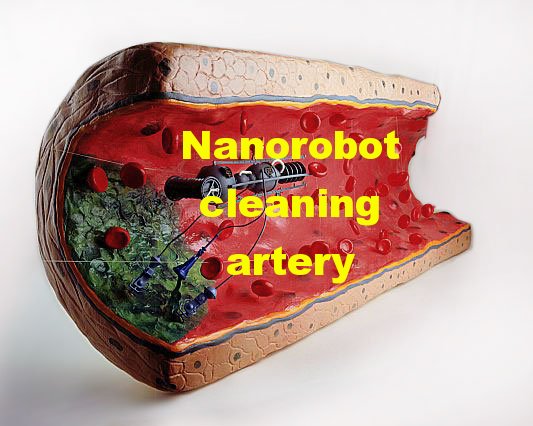 |
| Nano sensor looking for diseases in blood stream [ animated ] |
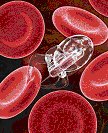 |
| Nano sensor fixing brain [ animated ] |
 |
| Nano robot searching for cancer cells [ animated ] |
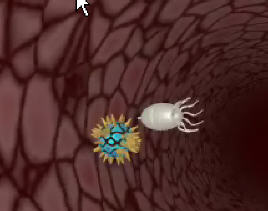
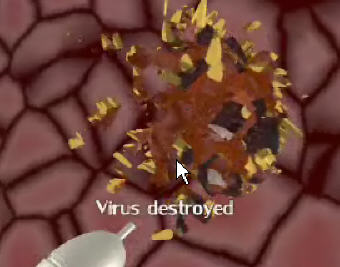
nanorobot finds cancer virus destroyed |
| Nano sensor miniature chip placed under skin to monitor & analyze body functions. Girl touches sensor to activate it. Predicted for about 2030 [ animated ] |
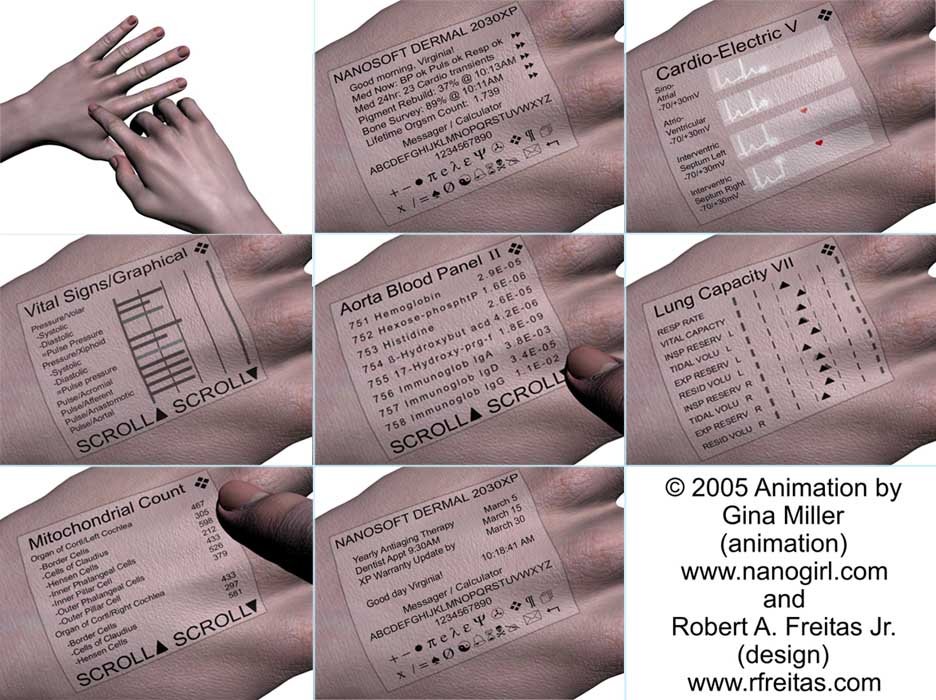 |
Additional Information supporting this site:
Bucky paper is a thin sheet made from nano tubes that are 250 times stronger than steel and 10 times lighter. LIFE WILL BE DIFFERENT by Merkle Ralph, “ Nanotechnology, “ Xyvex. Merkle web
“Manufactured products are made from atoms. The properties of those products depend on how those atoms are arranged. If we rearrange the atoms in coal we can make diamond. If we rearrange the atoms in sand (and add a few other trace elements) we can make computer chips. If we rearrange the atoms in dirt, water and air we can make potatoes.
Todays manufacturing methods are very crude at the molecular level. Casting, grinding, milling and even lithography move atoms in great thundering statistical herds. It's like trying to make things out of LEGO blocks with boxing gloves on your hands. Yes, you can push the LEGO blocks into great heaps and pile them up, but you can't really snap them together the way you'd like. In the future, nanotechnology will let us take off the boxing gloves. We'll be able to snap together the fundamental building blocks of nature easily, inexpensively and in most of the ways permitted by the laws of physics. This will be essential if we are to continue the revolution in computer hardware beyond about the next decade, and will also let us fabricate an entire new generation of products that are cleaner, stronger, lighter, and more precise. It's worth pointing out that the word "nanotechnology" has become very popular and is used to describe many types of research where the characteristic dimensions are less than about 1,000 nanometers. For example, continued improvements in lithography have resulted in line widths that are less than one micron: this work is often called "nanotechnology." Sub-micron lithography is clearly very valuable (ask anyone who uses a computer!) but it is equally clear that conventional lithography will not let us build semiconductor devices in which individual dopant atoms are located at specific lattice sites. Many of the exponentially improving trends in computer hardware capability have remained steady for the last 50 years. There is fairly widespread belief that these trends are likely to continue for at least another several years, but then conventional lithography starts to reach its limits. If we are to continue these trends we will have to develop a new manufacturing technology which will let us inexpensively build computer systems with mole quantities of logic elements that are molecular in both size and precision and are interconnected in complex and highly idiosyncratic patterns. Nanotechnology will let us do this. “
Nano scale size: LIFE WILL BE DIFFERENT! Nearly everything we do, nearly every experience we have, will be shaped by paradigm-shifting new technologies. Materials will be lighter, stronger, and functionalized. The way we work with information will be exponentially enhanced. Many things will be automated, including health monitoring and tracking. Should you choose, it will be an always-on interconnected society.
Screening, diagnosis, monitoring, treatment of disease, and emergency care will undergo a radical change in the next 50 years. Given the very rapid advances in the use of nano-particles for medicine, cancers will be treatable before 2057 and short-term illnesses, like the common cold, by 2020, given the pace of advances being made.
Picture yourself in a routine physical exam. The doctor takes a few samples of blood and urine or even asks you to spit in a cup. A drop of each sample is placed on a microchip and positioned in a tabletop machine in the doctor's office. The rest of the samples are sent off to a clinical laboratory. Your molecular profile has just been read.
“A lot of the things that you went to a pathologist for, you’ll be able to do at home,” says Terry Turney, the director of CSIRO’s Nanotechnology Centre.
Is this a hoax? The best answer to this a question is to ask: Where is the beef? Is there money behind this thing NANO? Here are two items that provide the answers to the above questions:
Financing Nanotechnology: Nanotechnology, the emerging science of manipulating matter on an atomic or molecular scale, is expected to be a multi-trillion-dollar international industry over the next decade. Now, $11 billion is being spent on nanotechnology worldwide, half by industry, half by government. In Australia, $160 million of public funds is now spent on nanotechnology research. Website
Most of the application research today is being done by universities in countries all over the world.
According to David M. Berube, author of Nano-Hype, by 2015, the market for nano structured materials will reach $340 billion. For electronics and information related equipment it will reach $600 billion, and for nano-pharmaceuticals, $180 billion.
Governments of more than 80 countries, rich and poor, are investing in nanotechnology as a key to global economic competitiveness. Global governmental spending has increased ten-fold in the past seven years, reaching a total approaching $5 billion in public spending in 2005 - $8 billion if private research and development is included 3 (Renn and Roco, 2006). Governmental support for nanotechnology is found not only in advanced industrial nations, but in the developing world as well – for example, in China, Taiwan, and South Korea, which, like the United States, are seeking to coordinate nanotechnology at the national level (Roco 2003).
Take a look at this: Activity in Nanotechnology. There is plenty of industry activity and interest in nanotechnology.
Here is a partial list of nano applications: a few have already been illustrated and available now, some are projected to be available in the next few years, some in 10 and others in 20 to 30 years.
Biomarkers: Every disease leaves a signature of molecular "biomarkers" in our body — genes that turn on and off, or proteins released into the bloodstream. Biomarkers measured in blood and other samples can tell us the state of our health and how we might respond to treatment. They are powerful tools that can detect certain diseases at their earliest stages before symptoms appear, when they are most treatable. Biomarkers can also guide the physician to prescribe an effective drug that will be free of side effects. Biomarkers represent the future of medicine, in which disease diagnosis, treatment, monitoring and prevention will be guided by a continual readout of our molecular make-up.
Hyper-efficient solar panels: This one seems pretty obvious to anyone tracking advances in this area. There are several technologies currently on the drawing board (or more precisely, in university and business labs) that look very promising. By promising I mean likely to achieve huge improvements in their sunlight-to-energy conversion rate. Today’s technologies allow for conversion rates that are almost good enough to compete toe to toe with coal, nuclear, and other traditional energy generation technologies A good investment would be photovoltaics solar(PV).
Deliver drug medication directly to sick cells and not spread it all over the body as most medications do today. The nano-tubes are "smart" because in the future they could be designed to encapsulate and then open up to deliver a drug or gene in a particular location in the body.
Materials scientists working with biologists at the University of California, Santa Barbara have developed "smart" bio-nanotubes — with open or closed ends — that could be developed for drug or gene delivery applications.
Scientists develop nanotech-laser treatment that kills cancer cells without harming healthy tissue.
Scientists at Stanford University have developed a new laser therapy that destroys cancer cells but leaves healthy ones unharmed. The new, non-invasive treatment is described in a study published in the Aug. 1 online edition of the Proceedings of the National Academy of Sciences (PNAS). "One of the longstanding problems in medicine is how to cure cancer without harming normal body tissue," says Hongjie Dai, an associate professor of chemistry at Stanford and co-author of the study. "Standard chemotherapy destroys cancer cells and normal cells alike. That's why patients often lose their hair and suffer numerous other side effects. For us, the Holy Grail would be finding a way to selectively kill cancer cells and not damage healthy ones."
'Smart' nano-probes light up disease: Houston, TX, August 01, 2005 --- Researchers from Rice University's Center for Biological and Environmental Nanotechnology (CBEN) have developed a "smart" beacon hundreds of times smaller than a human cell that is programmed to light up only when activated by specific proteases. Altered expression of particular proteases is a common hallmark of cancer, atherosclerosis, and many other diseases.
Currently being developed by the IST project OPTONANOGEN, a prototype of the system will initially be used to detect mutations of the BRCA1 gene that are responsible for between 2.5 and 5 per cent of the incidence of breast cancer in women. The final system, however, could be used to detect virtually any genetic anomaly as well as proteins linked to viruses, chemical contamination in food or water pollution.
Materials scientists working with biologists at the University of California, Santa Barbara have developed "smart" bio-nano-tubes — with open or closed ends — that could be developed for drug or gene delivery applications.
Using Nanoparticles, In Vivo Gene Therapy Activates Brain Stem Cells:
Technique may allow scientists to repair brain cells damaged by disease, trauma or stroke BUFFALO, N.Y. -- Using customized nano-particles that they developed, University at Buffalo scientists have for the first time delivered genes into the brains of living mice with an efficiency that is similar to, or better than, viral vectors and with no observable toxic effect, according to a paper published this week in Proceedings of the National Academy of Sciences. The paper describes how the UB scientists used gene-nano-particle complexes to activate adult brain stem/progenitor cells in vivo, demonstrating that it may be possible to "turn on" these otherwise idle cells as effective replacements for those destroyed by neurodegenerative diseases, such as Parkinson's.
Pharmos to Initiate Clinical Program in Tissue-Directed Treatment of Inflammation and Pain Proprietary NanoEmulsion Technology: Initial Target to be Treatment of Joint Arthritis ISELIN, N.J., July 6 /PRNewswire-First Call/ -- Pharmos Corporation ( NASDAQ:PARS ) announced today the initiation of a clinical program to commercialize its proprietary Nano-Emulsion drug delivery technology. The Company plans to initiate a Phase I/II feasibility clinical trial before yearend. The study will evaluate safety, pharmacokinetics and the analgesic effect of an approved non-steroidal anti-inflammatory drug (NSAID) formulated in its Nano-Emulsion in patients with osteoarthritic pain in the knee.
The skin penetrative properties of the solvent-free NanoEmulsion delivery technology and its low irritancy make this novel topical nanovehicle a promising candidate for effective transcutaneous delivery of lipophilic drugs. The Nano Emulsion technology is one of several proprietary lipid-based drug delivery nanotechnologies developed by Pharmos and covered by a portfolio of patents supporting a wide range of drugs and medical applications.
Saliva diagnostic to detect disease: Dr. Wong, who also leads UCLA's Dental Research Institute, described the latest in saliva diagnostic research to attendees at the American Dental Association's National Media Conference, held here today. “We have developed highly specific, nanotechnology-based biosensors (ultra tiny machines that read the simplest cell structure), which will permit the detection of disease-bearing biomarkers in saliva,” said Dr. Wong. Scientists have long recognized that saliva contains the full complement of proteins, hormones, antibodies and other molecular substances frequently measured in standard blood tests to monitor health and disease, he explained.
Researchers use Nanotechnology to Find Tumors Before They are Visible in Conventional MRI
ARLINGTON, Va., May 18, 2005 -- Biomedical engineers have used nanotechnology to find human melanoma tumors in mice while the growths are still invisible to conventional magnetic resonance imaging (MRI).
Earlier detection can potentially increase the effectiveness of treatment. This is especially true with melanoma, which begins as a highly curable disorder, then progresses into an aggressive and deadly disease.
A second benefit of the approach is that the same nanoparticles used to find the tumors could potentially deliver stronger doses of anti-cancer drugs directly to the tumor site with fewer side effects.
Self-cleaning windows and wrinkle free clothes:
Cuddeback says glass has been coated with nano-structured wax particles to create self-cleaning windows. Nano-glass can also be designed to better trap heat. But his favorite existing nano products are the pants and shirts made by such firms as the US-based Nanotex, where the fabric is coated with nan-oparticles. “There’s no stain or wrinkles. One researcher has had a couple of shirts now for over a year and washed them every week and hasn’t put an iron to them or had a stain on them. And they feel just like cotton . . . you can’t tell the difference.”
Sunscreen is another example: Zinc cream is a very visible white coating, unlike a nano-zinc cream such as “Megan Gale Invisible Zinc”, which has just hit the market. “The zinc particles are so small you can’t see them. It’s more effective, too.”
Scratchproof car paint: Mercedez-Benz, says Cuddeback, have built cars with nanotech scratchproof finish. Japanese researchers are using nanotech “buckytubes” that will allow high-resolution, flat-panel television. Energy is another field ripe for nanotech takeover. “They’re using nanotech for application to flat panel lights, where there are walls of light to replace light bulbs.”
Biosensors to protect us: Cuddeback also predicts a future full of nanotech. In 2020, he says we will be drinking desalinated water purified through nano-filters; nano-wiring may be fine enough to connect severed nerves in an injured spine, restoring partial movement for quadraplegics and paraplegics; biosensors with nano-detectors will protect cities from gas or viral attack. In defense, soldiers will wear T-shirt-weight material that can stop a bullet; nano-engineered explosives will be vastly more powerful; lightweight tanks will have super strong nano-armour.
Space elevator: Meanwhile, by 2018, the US company Liftport, with NASA’s backing, is aiming to build the first space elevator, in essence a superstrong cable stretching from an orbiting satellite to the ground. Mechanized “lifters” will hoist themselves up the cable and carry payloads into orbit. But the only material that’s strong enough to build such a cable — albeit produced so far only in short lengths — is a nano-engineered material called carbon nano-tubes.
Researchers convert heat to electricity: using organic molecules, could lead to new energy source By Sarah Yang, Media Relations | 15 February 2007 BERKELEY – Researchers at the University of California, Berkeley, have successfully generated electricity from heat by trapping organic molecules between metal nano-particles, an achievement that could pave the way toward the development of a new source for energy.
The discovery, described in a study published today (Thursday, Feb. 15) in Science Express, an electronic publication of the journal Science, is a milestone in the quest for efficient ways to directly convert heat into electricity. Currently, the dominant method of power generation involves burning fossil fuels to create heat, often in the form of steam, to spin a turbine that, in turn, drives a generator that produces electricity. An estimated 90 percent of the world's electricity - from power plants to car engines - is created through this indirect conversion of heat. In the process, a great deal of heat is wasted and released. Anyone who has ever had a car engine fail because of a malfunctioning radiator has experienced firsthand this excess heat.
Super Computers:
IBM has invested, 2006, $ one billion dollars in the next three years in partnership with India to develop a nano computer.
The great scientific, technical and medical breakthroughs of the next generation will take place at the near-invisible nano level, resulting in super-powerful computers that fit in a shirt pocket and tiny machines that crawl through the bloodstream, delivering cancer drugs directly to the surface of tumors.
A recent nano breakthrough came from Intel, the chip-making giant whose microprocessors power the vast majority of the world's personal computers and an increasing share of the large servers that businesses depend on.
Intel disclosed the first fundamental change in the way electronic circuits are produced since the 1960s - replacing much of the silicon dioxide used for insulation in its microscopic transistors with an alloy of an element called halfnium, which is less likely to leak electricity.
So what's the big deal? It means that circuits can be made even smaller and pack in even more transistors - the tiny switches that number in the hundreds of millions and do the real work in computers and other devices.
Until the latest announcements, Intel's best technology produced chips with transistors at the 65-nanometer level. The next generation of chips, which should appear by the end of this year, will use 45-nanometer technology.
The net result, Intel says, is twice the transistor density, which theoretically means you can cram twice as much computing power onto the same chip.
In fact, Intel says it can cram 30 million transistors onto the head of a pin - if it ever decides the world needs a pin computer.
The new technology also provides a 20 percent improvement in switching speed and a 30 percent reduction in power requirements.
If you don't think power consumption number is a big deal, just try using one of today's high-end laptops on your lap - you'll find out just how hot a hot machine can run.
More important, the change in chip design means that Moore's Law will not be repealed any time soon. This isn't legislation - it's a formula named after Intel founder Gordon Moore, who famously predicted that engineers would figure out how to double the number of transistors crammed onto a wafer of silicon every 18 months or so.
When you show up at Best Buy or CompUSA, Moore's Law translates into computers that have continually become cheaper and more powerful, as well as gadgets such as the iPod music and video player, which packs more computing power into a shirt pocket than most of us had on our desktops a few years ago.
The only reason Microsoft can market Vista's Premium edition, with a souped-up graphical interface that gobbles microprocessor cycles and memory, is Moore's Law. It has produced computers cheap and powerful enough to handle Vista's demands without making a fatal dent in most customers' bank accounts. (In fact, more than a few cynics see Vista as part of a vast conspiracy involving Microsoft, Intel and the entire hardware industry. After years in the doldrums, when people didn't need better computers for anything practical, consumers finally have a reason to buy.)
In any case, doomsayers had long predicted that Moore's Law would eventually run headlong into the laws of physics, which limit how far engineers can shrink a silicon-based circuit. Given the current materials used in processors, memory chips and other integrated circuits, some predicted that the computer power orgy would end before 2015.
This time, by changing the chemical structure of its circuits, Intel has dodged the bullet. The company says it already has processors based on its new Penryn technology running the Windows and Mac operating systems in its labs, and they should start to make their way to the marketplace this year.
Expect these chips to show up in high-end PCs first - the kind that gamers and video buffs buy. First-person shoot-'em-ups and high-resolution movie production are the only desktop applications that really tax any computer today. And their owners are crazy enough to part with 4 or 5 grand for a PC.
Eventually, we'll all benefit from lighter laptops with batteries that will last through a flight across the Atlantic and a whole generation of new, multipurpose high-tech tools and toys that make today's smart phones look like something cavemen used.
Still not convinced? In a different corner of the industry, scientists at the California Institute of Technology and UCLA reported in the journal Nature that they have produced a molecular-level memory chip 20 times as dense as today's best silicon.
Although it's a long way from production, the researchers say they can record 100 billion bits of information - the equivalent of 100,000 novels - in a single square centimeter.